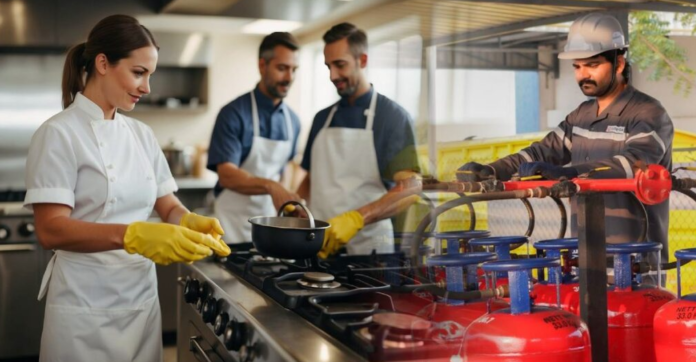Gas has long been an indispensable resource in both households and professional kitchens. From cooking to specialized culinary techniques, different types of gas cylinders are used to simplify tasks, improve quality, and create new taste experiences. Beyond cooking, these cylinders also play an important role in the beverage industry and food storage.
Different Types of Gas Cylinders
Gas comes in various forms and containers, each with its own advantages and areas of use. The most relevant for kitchens and gastronomy include:
- Propane – often used for grilling and portable stoves.
- Butane – ideal for smaller burners and portable kitchen tools.
- Carbon dioxide (CO₂) – commonly used for carbonating beverages and extending food shelf life.
- Nitrous oxide (N₂O) – mainly used in whipped cream dispensers and other culinary applications.
Each cylinder differs in handling, size, and purpose, making it essential to choose the right gas depending on your needs.
The Role of Nitrous Oxide in the Modern Kitchen
Among these gases, nitrous oxide has gained particular attention in gastronomy. It’s not only an effective way to create fluffy, stable whipped cream but is also used in innovative techniques to add flavors and textures to dishes. Professional chefs and baristas value its speed and precision.
One example is the N2O-cylinder 670g, which offers a balanced size and capacity for both home cooks and professionals. This type of cylinder is designed for safe use, easy handling, and long-lasting performance, making it a practical solution for diverse culinary needs.
Practical Applications
Nitrous oxide is especially popular when paired with siphons, which can be used for much more than just whipped cream. Some examples include:
- Creating airy mousses and desserts.
- Enhancing flavor extraction in oils and infusions.
- Making lightly carbonated drinks directly in the kitchen.
- Giving new textures to cocktails and chilled desserts.
This versatility makes the gas an indispensable tool for anyone looking to explore modern cooking techniques.
Comparison of Common Kitchen Gases
| Gas Cylinder | Common Use | Advantages | Limitations |
| Propane | Grill, stove | Readily available, powerful | Not ideal for small appliances |
| Butane | Burners, portable equipment | Compact, convenient | Affected by low temperatures |
| CO₂ | Carbonation, food storage | Creates bubbles, extends shelf life | Not suitable for cooking |
| N₂O | Siphons, desserts, drinks | Adds texture, versatile | Requires special equipment |
The table clearly shows why N₂O has become increasingly popular in both homes and restaurants.
Safety and Handling
Despite its many advantages, safe handling is essential. All gas cylinders should be stored in cool, dry places and kept out of reach of children. It is also important to always use products from trusted suppliers, as quality directly impacts both safety and results.
When using nitrous oxide in the kitchen, it is recommended to:
- Always check the siphon before use.
- Avoid overfilling the container.
- Follow the manufacturer’s instructions carefully.
- Dispose of used cylinders in an environmentally friendly way.
The Future of Gas in Gastronomy
The technology behind gas cylinders is constantly evolving. As interest in modern gastronomy and molecular cooking grows, nitrous oxide and other specialty gases are becoming increasingly common in restaurants worldwide. Even home cooks can now experiment with techniques once reserved for exclusive dining experiences.
This development paves the way for more creative solutions in the kitchen, where gas is not only functional but also a part of culinary artistry.
The versatility of gas in the kitchen makes it a natural resource for everything from everyday cooking to advanced culinary experiments. By understanding the differences between various cylinder types and their uses, both amateurs and professionals can take their cooking to the next level.


